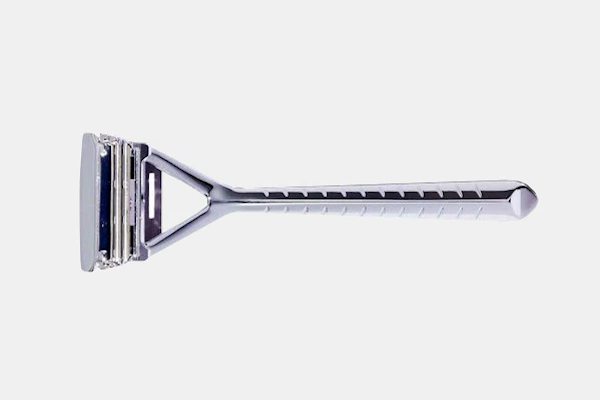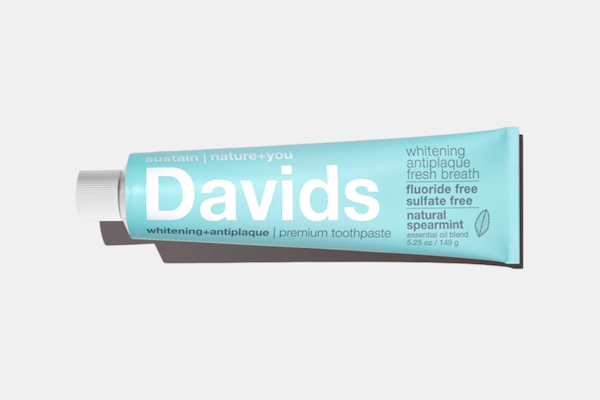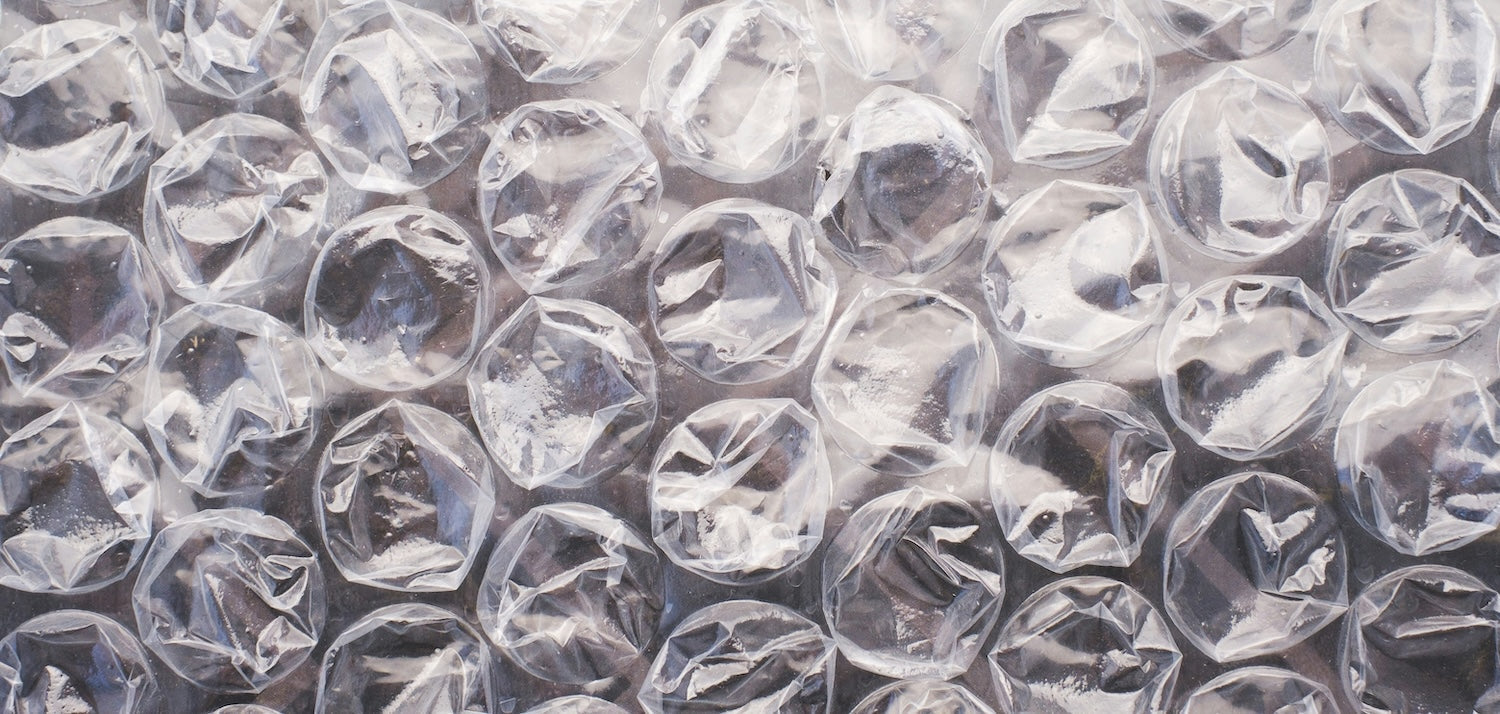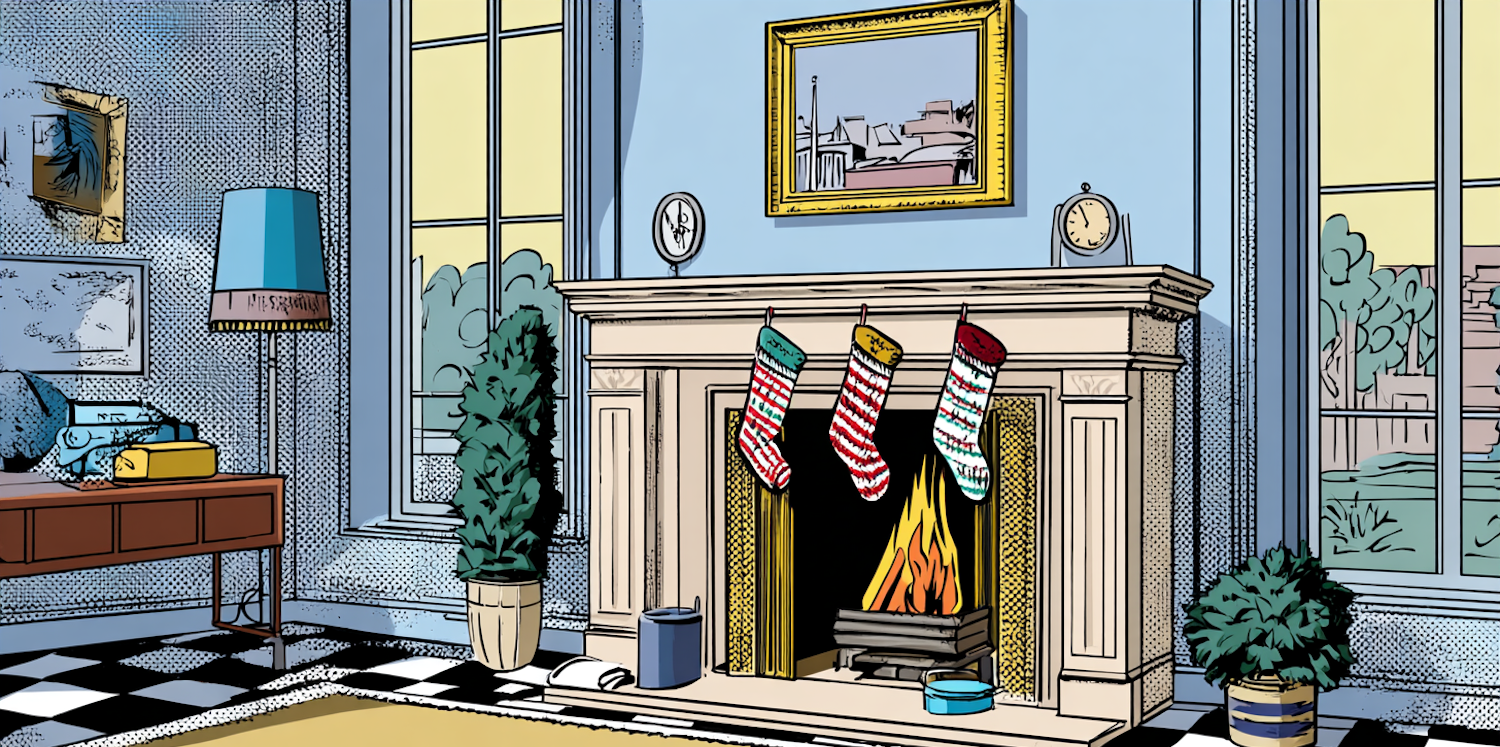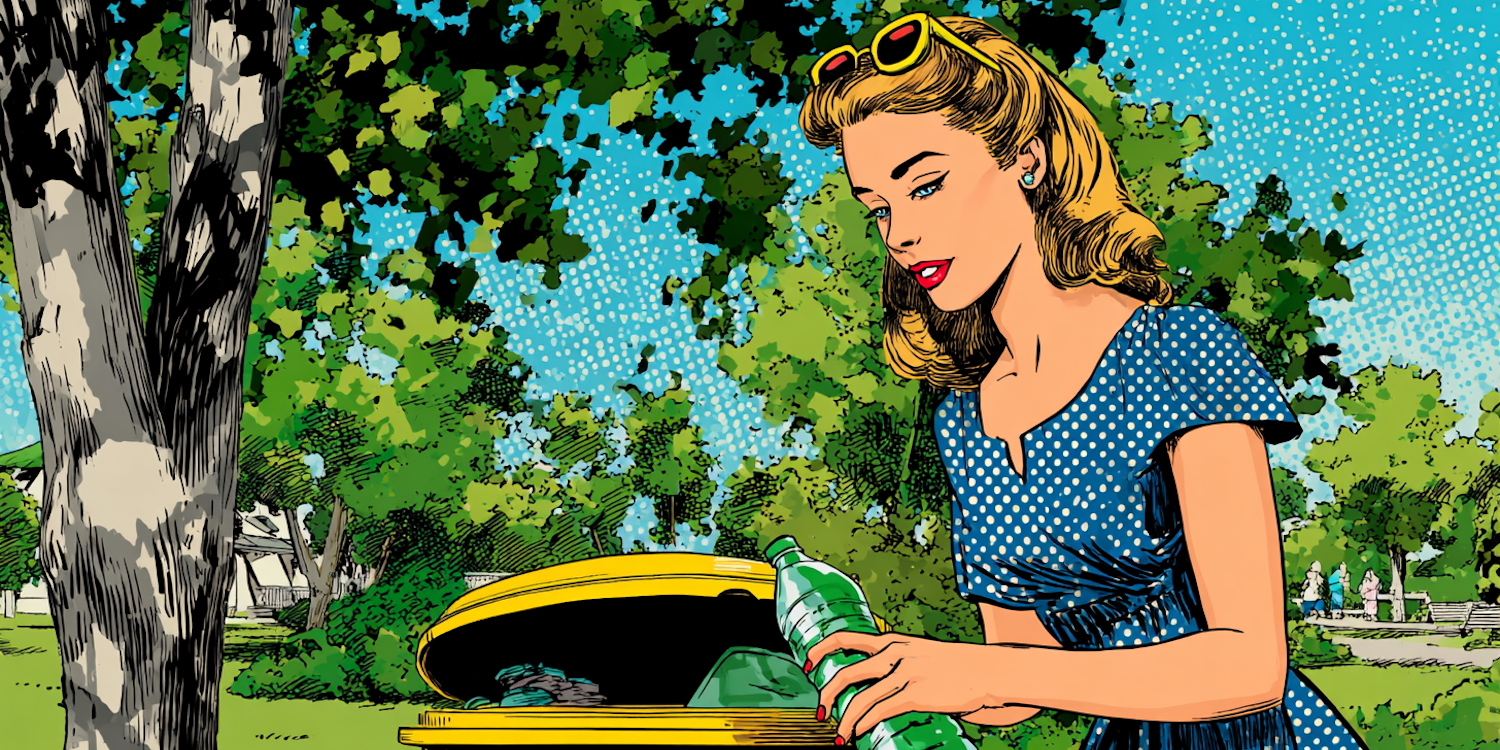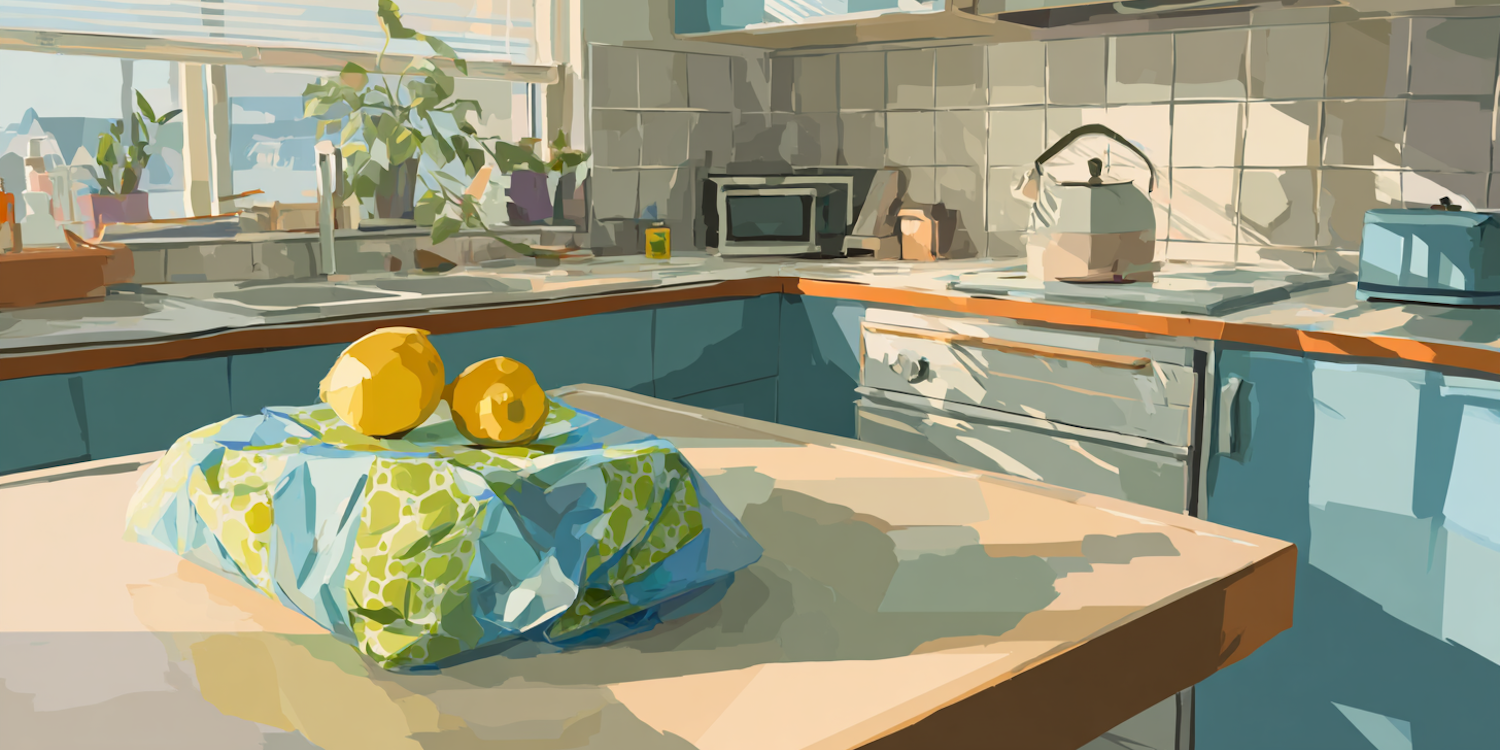Plastic packaging is everywhere—protecting our groceries, padding our online orders, and sealing our skincare. Yet single-use plastics account for roughly 40 percent of all plastic produced and are a leading driver of marine litter, microplastic pollution, and greenhouse-gas emissions from production and incineration. A 2025 consumer survey found that “minimal packaging” now ranks as the most-desired sustainability feature, even above recycled content or compostability. The good news: you don’t have to wait for brands or lawmakers to act. How to reduce plastic packaging is a question we get a lot at Lochtree, so we decided to tackle this question and provide you with actionable steps you can start today to shrink your plastic footprint.
1. “Isn’t recycling enough to deal with plastic packaging?”
Unfortunately, no. Globally, less than 10 percent of plastic ever made has been recycled, and complex, multi-layer films (think snack bags or padded mailers) are almost impossible to reprocess in curbside systems. The good news is that retailers are beginning to catch on to using recycled and reusable poly-mailers rather than virgin plastic or adopting recyclable paper alternatives.
2. “What’s the quickest way to cut plastic when I shop in-store?”
-
Bring reusables and plan ahead. Keep a compact kit—tote bags, produce sacks, stainless water bottle, coffee tumbler—in your car or backpack so you never get caught without an alternative.
-
Buy produce naked or in paper. Retailers from small co-ops to large chains are rolling out fiber-based produce packaging. Choose unpackaged fruit and veg first; when that’s not possible, look for paper or compostable fiber trays.
-
Shop bulk and refill. Bring jars or cotton bags for grains, nuts, and snacks. If your store requires pre-weighing, ask the cashier to record the tare weight before filling.
3. “How can I reduce plastic when I buy online?”
E-commerce boomed during the pandemic, but it doesn’t have to mean mountains of bubble wrap.
-
Choose retailers with plastic-free commitments. Many eco-marketplaces—including Lochtree—ship with recycled and reusable mailers, compostable mailers, or plant-based cushioning.
-
Consolidate orders. One larger shipment often uses less packaging than several small ones.
-
Reuse what arrives. Save sturdy boxes, paper fill, or corrugated sleeves for future returns, moving, or gifting.
-
Send feedback. Most sites give you a chance to leave packaging comments at checkout. Positive reinforcement (“Loved the packaging!”) nudges brands to keep improving.
4. “What are the best plastic-free packaging innovations to look for?”
2025 has brought an explosion of alternatives that perform like plastic but avoid fossil-fuel feedstocks:
-
Seaweed films & edible wraps. Already commercial for sauces and beverage pods. Sustainability Magazine
-
Mushroom mycelium foam. It grows in days, is home-compostable, and is perfect for protecting fragile electronics.
-
Paper-based flexibles. New coatings allow grease- and moisture-resistance without PE layers, making them fully recyclable in paper streams.
Action step: When you see unfamiliar materials, flip the package over. Legitimate innovators explain disposal (“certified home-compostable,” “recycle with paper”) and may carry third-party labels like OK-Compost or How2Recycle.
5. “How do I recycle the plastic that’s left?”
-
Know your numbers. #1 (PET) and #2 (HDPE) bottles are widely accepted. #4 films and #5 tubs are increasingly curbside-eligible, but check your municipality.
-
Separate caps. Unless your hauler instructs otherwise, leave caps on bottles—loose caps fall through sorting screens.
-
Drop off films. Grocery-store collection bins accept clean bread bags, poly mailers, and bubble wrap; they’re turned into composite lumber.
-
Avoid “wish-cycling.” Non-recyclables contaminate whole loads. If in doubt, leave it out.
6. “Can my consumer choices really move the needle?”
Absolutely. When buyers speak, brands pivot—sometimes faster than regulation can keep up.
Ways to amplify your voice
-
Leave product reviews that highlight packaging.
-
Email customer service with praise for plastic-free orders.
-
Support legislation such as Extended Producer Responsibility (EPR) bills, which require brands to fund recycling.
-
Invest consciously. Many robo-advisors let you screen funds for single-use plastic exposure.
Your Plastic-Light Starter Checklist
-
Audit your bin. One week of trash reveals your biggest plastic culprits.
-
Pick one high-impact swap. Dish soap blocks? Shampoo bars? Make it stick before adding more.
-
Build a refill routine. Schedule a monthly trip to a local zero-waste or grocery bulk aisle—think of it like meal prep.
-
Create a takeout kit. Utensils, straw, collapsible bowl: no more single-use cutlery.
-
Set up a reuse corner. Assign a shelf for clean jars, mailers, and boxes so you use them.
-
Celebrate progress, not perfection. Plastic reduction is a journey, and every skipped wrapper counts.
The Bottom Line
Reducing plastic packaging isn’t about depriving yourself or living an Instagram-perfect zero-waste life. It’s about shifting demand—vote with your wallet for materials that respect planetary boundaries and for systems that keep resources in circulation. Innovations from seaweed films to refill stations make it easier every year, and consumer momentum is already driving mainstream retailers to rethink their packaging mix.
At Lochtree, we vet every brand and examine both the product and the packaging to help you reduce waste in your life. Our mission is to help make sustainability simple by doing the homework for you. Interested in finding new ways to reduce waste in your life? Check out our newest products at Lochtree and find new ways to live sustainably.
If you would like to learn more about Lochtree’s shipping and packaging policies, read our Shipping Policy.
If you enjoyed this article, you may like reading our blog: Does Zero-Waste Mean No Waste?

